Unclear Purpose Of Mysterious Rock-Cut City Of Petra – Was It A Fortress Or Sacred City?
A. Sutherland - AncientPages.com - Petra - was a "fairy city of pink sandstone", mysterious, legendary and lost to the western world, and erased from our memory for over a thousand years.
History has long been very silent in regard to the life, art, and religion of the Edomites, but slowly, archaeologists begin to unveil Petra's oldest secrets.

The region around Petra not only grew enough food to meet its own needs but also would have been able to provide olives, olive oil, grapes and wine for trade.
Since the time of Johann Ludvig Burckhardt, who rediscovered Petra in 1812, the purpose of the rock-cut city hidden away in a rather secret location, has baffled many scholars, archaeologists, and ordinary travelers.
What exactly was the function of this place? Was it a sacred city, a commercial center, or a fortress?
The ancient city of Petra - with more than 3,000 temples, tombs and thousands of caves carved out of sandstone rocks - was built at the foot of Jordan's Jebel al-Madhbah mountain, in the harsh desert of southern Jordan and situated in Mt. Seir, about 80 kilometers south of the Dead Sea and 2,775 feet above sea-level.
The city - built inside a gorge approximately 4000 feet (1200 m) long and up to 330 feet (100 m) deep - was first inhabited by a Semitic-speaking tribe of the Edomites, mentioned in the Bible as descendants of Esau, the father of the Edomites in the hill country of Seir.
After the Edomites fell, the Nabateans arrived and settled there in the third century BC and so, from the first century B.C. to the third century A.D., Petra was one of the most influential and prosperous commercial centers in antiquity.
The majority of the buildings were cut directly into the cliffs by the Nabatean builders or were at least brought into their fascinating form by them.
The recent discovery of terrace farming of wheat, grapes and possibly olives, resulted in a vast, green, agricultural “suburb” in an otherwise very inhospitable and arid landscape, is evidence into successful and extensive water management and agricultural production in and around Petra.
The Nabataeans, whose prosperous kingdom had its capital at Petra until the beginning of the second century, were skilled people, according to archaeologists continuously working in the area.
It has been suggested that extensive terrace farming and dam construction in the region north of the city began around the first century, some 2,000 years ago, not during the Iron Age (c. 1200-300 BC) as had been previously hypothesized.
Based on surface finds and comparative data collected by other researchers in the area, however, it is clear that this type of farming continued to some extent for many centuries, until the end of the first millennium (between A.D. 800 and 1000).
Dating the start of extensive terrace farming at Petra to the beginning of the common era has important historical implications, according to researcher Christian Cloke, a doctoral student at the University of Cincinnati, and one of the researchers involved in the Brown University Petra Archaeological Project (BUPAP).
Namely, this date coincides closely with the Roman annexation of the Nabataean Kingdom in A.D. 106.
The region around Petra produced food to meet its own needs and was able to trade olives, olive oil, grapes, and wine.
This robust agricultural production would have made the region a valuable asset for supplying Roman forces on the empire's eastern frontier."
See also:
Skilled Nabateans Celestially Aligned Petra's Wonderful Architecture
On large stretches of land north of Petra, inhabitants built complex and extensive systems to dam wadis (riverbeds) and redirect winter rainwater to hillside terraces used for farming. It was important for Petra’s inhabitants to capture and store all available water for later use during the dry season. Over the centuries, the Nabataeans of Petra became experts at doing so.
The Nabateans had considerable knowledge of their surrounding topography and climate and differentiated watersheds and the zones of use for water. These mysterious people also were skilled skywatchers, who made systematic and accurate observations. The proof of their astronomical achievements can be found in Petra's celestially aligned buildings.
Petra's water supply was of prime concern as the city was situated on the edge of the desert. The Nabateans - highly skilled hydraulic engineers developed sophisticated irrigation systems, dams, and water conservation.
In the year 106 AD the Nabateans were defeated by the Romans and Petra became part of the Roman Empire. After two devastating earthquakes in 363 AD and 551 AD, the inhabitants left the rock city.
Evidence from archaeological investigations over the years suggests that the strange city of Petra may have had many different functions over the hundreds of years it was inhabited and it's still much to investigate in this ancient place.
Written by – A. Sutherland - AncientPages.com Senior Staff Writer
Copyright © AncientPages.com All rights reserved. This material may not be published, broadcast, rewritten or redistributed in whole or part without the express written permission of AncientPages.com
More From Ancient Pages
-
 Ancient History Of Chinese Swords
Featured Stories | Aug 20, 2018
Ancient History Of Chinese Swords
Featured Stories | Aug 20, 2018 -
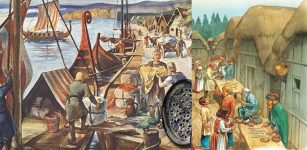 Félag – Ancient Viking Company Organized Trade Finance
Ancient History Facts | May 4, 2018
Félag – Ancient Viking Company Organized Trade Finance
Ancient History Facts | May 4, 2018 -
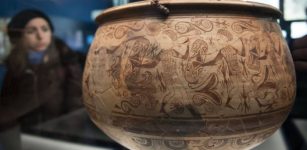 Ancient Secrets Of Iberian Warrior Vase – 2,000-Year-Old Masterpiece Of Art
Archaeology | Dec 5, 2017
Ancient Secrets Of Iberian Warrior Vase – 2,000-Year-Old Masterpiece Of Art
Archaeology | Dec 5, 2017 -
 Nurikabe: Trickster That Manifests Itself As Invisible, Impassable Wall In Japanese Old Beliefs
Featured Stories | Oct 21, 2019
Nurikabe: Trickster That Manifests Itself As Invisible, Impassable Wall In Japanese Old Beliefs
Featured Stories | Oct 21, 2019 -
 Mysterious Voynich Manuscript Was Written In Two Languages – Scientists Say
Archaeology | Apr 24, 2017
Mysterious Voynich Manuscript Was Written In Two Languages – Scientists Say
Archaeology | Apr 24, 2017 -
 Mysterious And Unexplained Encounter With Unusual Tiny Beings In Italy – The Thing – Part 1
Featured Stories | Jan 15, 2022
Mysterious And Unexplained Encounter With Unusual Tiny Beings In Italy – The Thing – Part 1
Featured Stories | Jan 15, 2022 -
 Asclepius Sanctuary On Acropolis Slope Will Be Restored
Archaeology | Jan 3, 2016
Asclepius Sanctuary On Acropolis Slope Will Be Restored
Archaeology | Jan 3, 2016 -
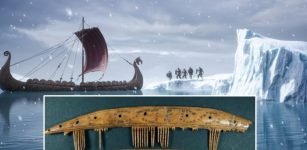 Vikings’ Long Distance Trade Reached The Arctic – Deer Antler Combs Reveal
Archaeology | Sep 19, 2023
Vikings’ Long Distance Trade Reached The Arctic – Deer Antler Combs Reveal
Archaeology | Sep 19, 2023 -
 Were The Bones Of Fallen Battle of Waterloo Soldiers Sold As Fertilizer? – New Study
Archaeology | Jun 18, 2022
Were The Bones Of Fallen Battle of Waterloo Soldiers Sold As Fertilizer? – New Study
Archaeology | Jun 18, 2022 -
 Likho (Licho): Puzzling And Persistent Demon Of Mischief In Slavic Mythology
Featured Stories | Dec 18, 2016
Likho (Licho): Puzzling And Persistent Demon Of Mischief In Slavic Mythology
Featured Stories | Dec 18, 2016 -
 Struggle To Get Mail On Time Has Lasted More Than 5,000 Years – Part 3
Featured Stories | Aug 1, 2017
Struggle To Get Mail On Time Has Lasted More Than 5,000 Years – Part 3
Featured Stories | Aug 1, 2017 -
 Dingoes Given ‘Almost-Human’ Status In Pre-Colonial Australia – Archaeological Study Finds
Archaeology | Oct 21, 2023
Dingoes Given ‘Almost-Human’ Status In Pre-Colonial Australia – Archaeological Study Finds
Archaeology | Oct 21, 2023 -
 New Evidence Reveals That Humans Settled In Americas At Least 13,000 Years Ago
Archaeology | Sep 4, 2017
New Evidence Reveals That Humans Settled In Americas At Least 13,000 Years Ago
Archaeology | Sep 4, 2017 -
 Scylla And Charybdis – Legendary Greek Sea Monsters – Choosing The Lesser Of Two Evils
Featured Stories | Jan 15, 2021
Scylla And Charybdis – Legendary Greek Sea Monsters – Choosing The Lesser Of Two Evils
Featured Stories | Jan 15, 2021 -
 On This Day In History: Earthquake In Pompeii, Italy Occurred – On Feb 5, 62 AD
News | Feb 5, 2017
On This Day In History: Earthquake In Pompeii, Italy Occurred – On Feb 5, 62 AD
News | Feb 5, 2017 -
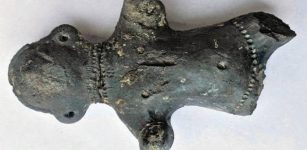 Evidence Of Sangam Age Settlement Unearthed At Nangur, Tamil Nadu
Archaeology | Jul 11, 2019
Evidence Of Sangam Age Settlement Unearthed At Nangur, Tamil Nadu
Archaeology | Jul 11, 2019 -
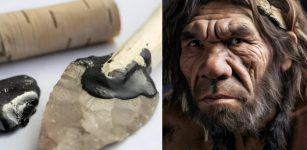 Birch Bark Tar Production Techniques Offer Evidence Neanderthals Had Cognitive Skills Similar To Modern Thinking
Archaeology | Sep 26, 2023
Birch Bark Tar Production Techniques Offer Evidence Neanderthals Had Cognitive Skills Similar To Modern Thinking
Archaeology | Sep 26, 2023 -
 Secrets Of Hermes Trismegistus Who Brought Divine Wisdom To Mankind
Featured Stories | Feb 23, 2025
Secrets Of Hermes Trismegistus Who Brought Divine Wisdom To Mankind
Featured Stories | Feb 23, 2025 -
 Ancient Tools Used In Religious Rituals In Honor Of Goddess Hathor Discovered In Egypt
Archaeology | Sep 27, 2021
Ancient Tools Used In Religious Rituals In Honor Of Goddess Hathor Discovered In Egypt
Archaeology | Sep 27, 2021 -
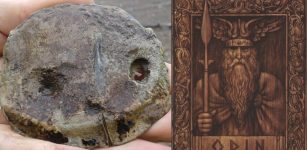 Unusual Object With Crosses And Enigmatic Runes Discovered In Sweden
Archaeology | May 16, 2018
Unusual Object With Crosses And Enigmatic Runes Discovered In Sweden
Archaeology | May 16, 2018





